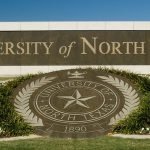Rocky Stone Hearing Device Exhibit Presentation
Editor: The folks at the Redwood City, CA SHHH-Peninsula group decided that their region needed a center where people could try out various types of Assistive Listening Devices (ALDs) to determine what worked for them. They set out to do just that, and were able to establish a well-equipped center in surprisingly short time. Here’s an amazingly detailed and complete roadmap for others who are interested in doing something similar.
Introduction
Our chapter in Redwood City, CA, SHHH-Peninsula has started a library project and after much discussion we decided to name it “Rocky Stone Hearing Device Exhibit”. We wanted to name it after Rocky so people on the west coast would know who started SHHH. We are going to give the visitors a sheet telling all about his life.
Also, we thought many of the companies that participated would be familiar with this project when contacted by other cities using this name and their city.
I thought since we found it very easy to do, maybe you all would like to do it also. Maybe you can use the same name, with adding your city’s name after it. We plan on loaning the devices to cities close to us to use and other cities might want to do that also.
Establishing the Project
First we contacted our local Library Foundation. They had the money. When we told them the about the needs of 15% of the population in our city that were hard of hearing, they were very interested. We explained that there are 47 – 52 million people with disabilities in the United States and 28 million are hard of hearing. That represents 15% of the population. This is truly a “Silent Disability.” After explaining the project we wanted to start in the library, they decided it was just what they were looking for. At first they told us they would give us $10,000 (I almost fell off the chair when I heard that); however, later due to reduced funding, the board voted on $3000 to loop the conference room and purchase books and tapes. (Books and tapes that were not already in the library for hard of hearing people.)
Next we went to the library and looked up grants. We knew of a local grant that gave money to projects like ours. Since they knew us personally we didn’t have to write a grant letter. We just went to the board and made our presentation.
I told them I was not used to making presentations. So if they would forgive me I was going to read my story. That is what I made it, a story so they could feel a part of it. I was kind of embarrassed telling about myself, but I had a lot of people say that if people can identify with a person they are more likely to donate. So I suggest you tell your own story. I’m sure you all have a story to tell.
Before I made the presentation they said they might give us $1000; however after I gave the presentation they gave us the whole $4000. So I guess it works.
We showed them a spreadsheet that outlined our proposal costs.
We thought this was a basic list which we would expand later when we received more funding (which we did).
Next we needed to spread the word about our program. We went anywhere we could speak: retirement homes, church groups, and service clubs in all the cities around us. (Your local Chamber of Commerce can give you a list of all the service clubs in your area, with the chapter presidents and their phone numbers.)
After I spoke to a club I send a letter to the President asking to be on their fund raising list. This is another way to get funding. The word started to spread and we got calls from other groups wanting us to speak to them. We even got calls about speaking in college audiology and physical therapy classes.
Here’s a presentation I might use with a service club.
We also took our flyers everywhere.
To acquire the devices, we sent letters to several companies. Here’s a typical supplier letter, and here’s the contact information for the companies we contacted.
After about two weeks we called the companies and talked about the project. We answered any questions and got donations and devices at a discount. All the companies were very, very helpful and happy to talk to us.
To introduce ourselves to the public, we had an Open House in conjunction with our Library Foundation Board. They helped us in many ways. A local magazine announced the event, and we distributed information far and wide. We had an article in the library newsletter.
It was held May 12, 2005 in the looped room at the library. The board members and our chapter members provided appetizers and cookies. We were very successful. We had over 80 people, mostly new faces, the press and the city council. We were so happy that some SHHH members traveled very far to attend also.
Program Operation
- We have a questionnaire for the first-time visitors to fill out, asking where they have trouble hearing. (We really know what the answers will be – TV, Restaurants, etc.)
We also hand out a bio on Rocky Stone so everyone knows all about him.
- Then we demonstrate all the devices. We give each person apacket describing every item.
and we have a sheet under each device giving the name, price, where it can be purchased, and a little description about it.
- We have eight trained volunteers (always looking for more) that work with each one individually, letting them try the devices out themselves, because everyone’s hearing loss is different and everyone’s needs are different.
- After the volunteer answers all of their questions (or tells them they will get the answer and get back to them if they don’t know the answer) they are given the catalogs they need to take home and purchase the items if they wish.
Program Results
Up to now we have seen 200 people. It is so-o-o-o-o rewarding. All the volunteers are very excited to be able to give this service. You can’t believe, or I guess you can, that most of the people that came didn’t know anything about SHHH, T-coils or Assistive Devices. We all have our work cut out for us, right




